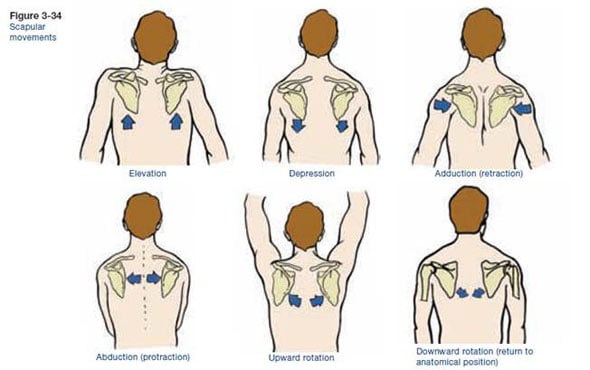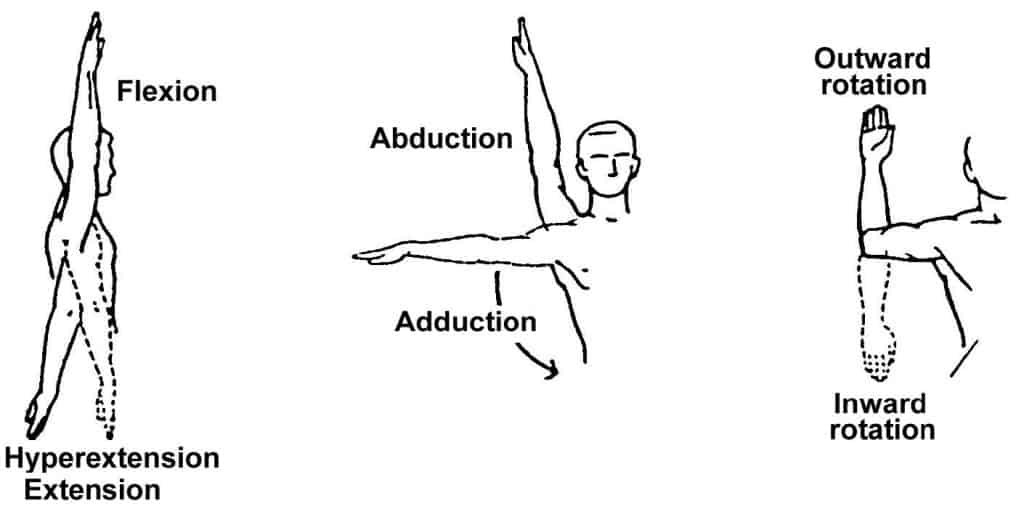
Gaining Scapular Control
The shoulder blades are an enigma to the joint-by-joint theory. They act as a mobile-stabilizer to everything connected to the thoracic cavity. The only comparable area is the pelvis, which connects the hips to the lower canister of the torso. It’s unique function has coined the new term, “controlled mobility”. In short, the shoulder blades first need maximal mobility in order to provide maximal stability. Without either, your shoulders and posture will be far less than optimal.
Dr. Andreo Spina breaks this concept down even further, giving typical versus possible positioning:
There are two main types of kinetic chain movements – open and closed. Open chain movements allow the hands and feet to move freely in space. Closed chain movements fix your hands or feet to an immovable surface. Open chain movements are purely motor control. There is no help from external forces. Closed chain movements react to the environment. Feedback from the surface propels the joints into ranges of motion beyond what the brain alone can provide.
The easiest position for the scapula to mobilize is when the shoulder socket sits axially.
Shoulder blade position is tied to shoulder socket position. Centered along a perfectly vertical or horizontal plane, the glenohumeral joint allows the shoulder blade to move freely.
OPEN CHAIN
Arm abducted scapular retraction
https://instagram.com/p/8lEYk2o9i5/?taken-by=drandreospina
Vertical Scapular Circles from the Deep Squat Positions
With lower body assistance impeded, scapular and thoracic motion is concentrated and/or encouraged. Any help from the hips, pelvis, and low back is negated when performing upper body movements from the bottom of a squat.
https://instagram.com/p/6XR34eI9hf/?taken-by=drandreospina
Vertical Circles from the Prone Lying Position
Face down the scapula have to work a bit harder against gravity. This can be helpful to get the necessary feedback needed to ‘figure out’ retraction, but it makes the circular control somewhat more difficult.
https://instagram.com/p/60bzBrI9jA/?taken-by=drandreospina
CLOSED CHAIN
The vector or direction of desired movement must get factored into the equation in a closed kinetic chain. Below the user desired lateral assistance, so he anchored his arm in that plane of motion.
https://instagram.com/p/76QAZlI9g2/?taken-by=drandreospina
Vertical propping (user is settled between boxes)
https://instagram.com/p/7V_I_FstjR/?taken-by=storeyfitnessla
Vertical hanging
https://instagram.com/p/8Mo4wXRjdC/?taken-by=danajohnflows
The ability to control scapular movement axially in flexed and overhead movements can progress to extended challenges of control:
https://instagram.com/p/7GhD_cstgt/?taken-by=storeyfitnessla
GUIDED CHAIN
Guided chain movements use a method of assistance to give the brain a set of instructions as to HOW a movement should be performed.
Roller guided scapular elevation and depression
https://instagram.com/p/9KHcv3I9o3/?taken-by=drandreospina
Wall guided vertical circles
TO REVIEW
- Properly functioning open chain movement is the end goal to movement training
- Open chain movement allows the hands or feet to move freely in space
- Closed chain movement fixes the hands or feet to an immovable surface
- Closed chain movement adds a stability factor to improve mobility
- Closed chain movement progresses to guided chain movement (which progresses to open chain movement)
- Improving joint control is based on a neurological feedback loop
- Gravity can be manipulated to provide feedback in open chain movements
- Direction of pull or push can be manipulated to provide feedback in closed chain movement
- The shoulder blade moves easiest when the shoulder socket is centered axially




